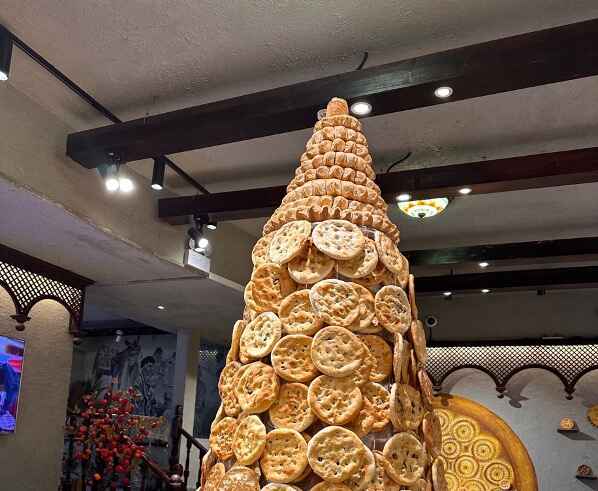
URUMQI, Sep 26 (INP): The rhythmic beats of the Naghra kettledrum reverberate through the air as a Uyghur musician, dressed in a blue robe, strikes the drum with practiced taps.
His red-robed companion plays a lively melody on the suona, the music drifting through the entrance of a newly opened fruit themed supermarket. Drawn to the vibrant sounds, a twenty-something passer-by joins the duo for an impromptu traditional Xinjiang dance, China Economic Net (CEN) reported on Tuesday.
Established in 2003, the Xinjiang Grand Bazaar spans an expansive 100,000 square metres with more than 3,000 stores. The bazaar has increasingly become a tourism hot spot, with a daily visitor count exceeding 120,000 and surpassing 150,000 over the weekends since this August.
Behind this uplifting development is that the bazaar goes beyond its role of a marketplace to showcase the region’s unique architectural, culinary and cultural traditions, and its innovation capabilities.
At the entrance of the Xinjiang Grand Bazaar lies an 80-metre dome-roofed sightseeing tower. Adopting traditional Uyghur architectural design, the two-storey platform offers a panoramic view of the entire bazaar and its surrounding area.
“I just love this tower. It has an amazing appearance, and it provides so unique a view,” Mr Liu, a visitor from China’s coastal city of Hangzhou told China Economic Net (CEN) reporter.
To promote the culture of naan, a traditional Xinjiang flatbread that resembles a pizza without sauce, a naan-themed museum was established.
The museum educates visitors about the history of naan bread, the different types of naan across Xinjiang and the raw materials and tools for naan making.
Also highlighted at the bazaar are traditional culinary delights such as Kao Bao Zi (meat-filled baked buns) and Xinjiang lamb skewers and traditional dance and music performances.
Building on the cherished traditional elements, the bazaar has also explored new avenues for development. The first way is to combine cultural elements with contemporary designs to develop a range of creative tourism and culinary products.
For example, in 2020, the bazaar partnered with a tourism company based in Fujian to craft official merchandise featuring silk apparel, hats, and scarves, and traditional Uyghur musical instruments.
The bazaar has also engaged the Belt and Road Initiative (BRI) countries for exchange and inspirations. In the 2023 Silk Road Culinary Festival held at the bazaar from September 23rd to 28th, culinary and tourism enterprises from countries along the Silk Road including Russia, Kazakhstan, Uzbekistan and Kyrgyzstan are invited to showcase their unique offerings.
CEN reporter understands that the event also witnessed the establishment of a silk road culinary alliance to further boost culinary cooperation between Xinjiang and Silk Road countries.
Up to now, the grand bazaar boasts nearly a hundred local snacks and a variety of distinctive cultural products, a representative from the Tianshan District Cultural Tourism Development Co., Ltd. in Urumqi said in an early September interview, adding that more such products are to be launched.
INP/javed































































































